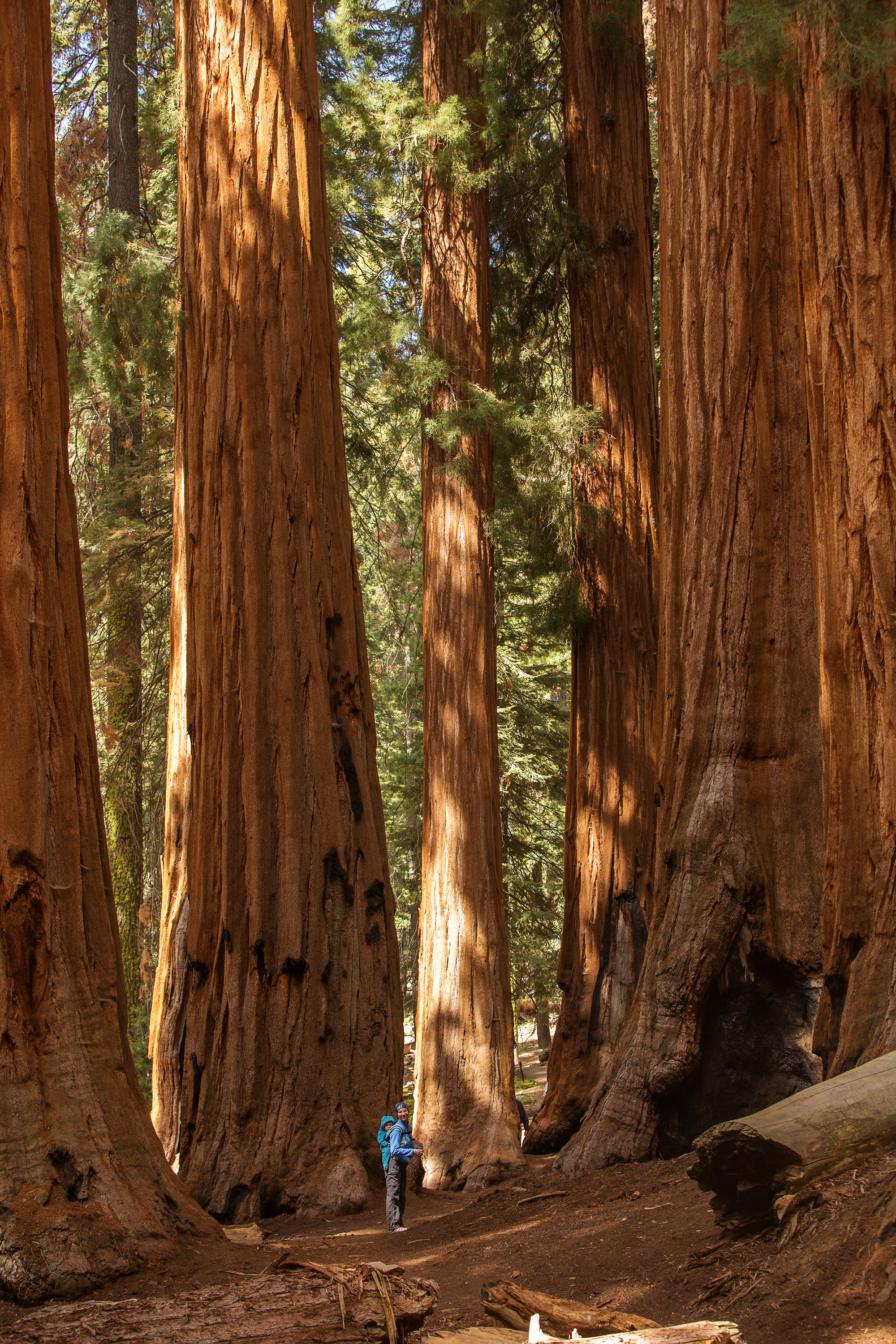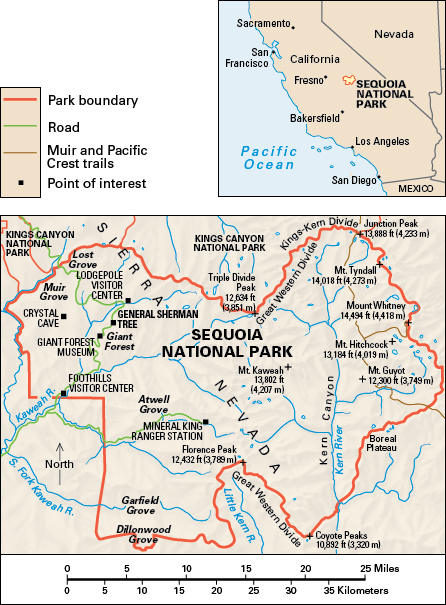Sequoia << sih KWOY uh >> National Park, in the United States, is the home of one of the finest stands of giant sequoia trees. In this park are thousands of these trees, several hundred of which are more than 10 feet (3 meters) in diameter. The world’s largest tree in volume of wood is a sequoia known as the General Sherman Tree. It is roughly 275 feet (83.8 meters) high and has a circumference of about 103 feet (31.4 meters) at the base. The tree is between 2,200 and 2,500 years old.

The park is on the western slopes of the Sierra Nevada in central California. Most of it is mountain wilderness. There is a difference in altitude of over 2 miles (3.2 kilometers) from the park’s lowest point to its highest. From the top of Mount Whitney (14,494 feet, or 4,418 meters), one of the highest peaks in the United States, the visitor can look 100 miles (160 kilometers) east to mountains around Death Valley. For the park’s area, see National Park System (table: National parks) .

There are hundreds of miles or kilometers of trails in the park. Mountain streams and lakes offer fine trout fishing. Kern River Canyon, Crystal Cave, and the rugged crags of the Sierra attract thousands of visitors. The park is popular for winter sports.
Sequoia National Park was established on Sept. 25, 1890, and was the second national park created. Yellowstone National Park, the oldest, was set aside 18 years earlier. It was largely through the efforts of George W. Stewart that the giant sequoia trees were saved from the lumber mills. Kings Canyon National Park adjoins Sequoia National Park on the north. The National Park Service administers both of these parks.
See also Kings Canyon National Park .
